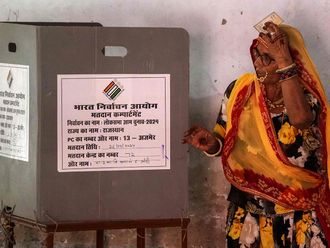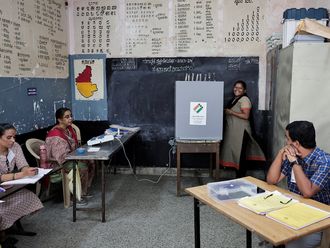Patna: At a time when female foeticide has emerged as a major social evil in the country, there are quite a number of villages in Bihar which have been celebrating the birth of a girl chid by distributing sweets among the villagers.
The encouaging trend has been noticed in dozens of villages in southern Bihar’s Nawada, a rather backward district in matter of poor health facility, illiteracy and poverty.
Authorities said there are certain villagers like Murhetachak, Mudgadwa, Dhonga Bigha, Gandhi Nagar, Sirsa Pahadi, Rampur-Dariyapur, Purnadih, Satan Bigha and Noni which are a messanger of hope for the next generation at a time when most of the country no longer want a girl child as indicated by the Indian census.
Officials said in those villages, girls in the age group of 0 to 6 outnumber boys as the villagers do not consider them a “burden”.
“Girl children are a necessity in this part of the state and hence they are not a burden for the family, for the society”, said Prakash Chauhan, chief of Meskaur block. He added in this part of the state, the majority of villagers are from poor backward and extremely backward classes where dowry demands are fewer. Dowry is said to be one of the main reasons behind female foeticide in India.
A local villager, Upendra Rajvansi, who has five daughters but one son, said he had never discriminated among his children and had got them admitted to the same school for education. “A local medical clinic forced my wife Manju Devi for a sex determination test when she went there for medical advice but I stoutly refused,” he explained.
The development is in sharp contrast to the prevalent social crisis in India where female foeticide has assumed alarming proportions.
According to a Unicef report, foetal sex determination and sex selective abortion by unethical medical professionals have today grown into a Rs10 billion (Dh660 million) industry.
“Social discrimination against women, already entrenched in Indian society, has been spurred on by technological developments that today allow mobile sex selection clinics to drive into almost any village or neighbourhood unchecked”, said a Unicef report.
Researchers for the Lancet journal based in Canada and India have stated that 500,000 girls are being lost annually through sex selective abortions.
According to the decennial Indian census, the sex ratio in the 0-6 age group in India went from 104.0 males per 100 females in 1981, to 105.8 in 1991, to 107.8 in 2001, to 109.4 in 2011.












